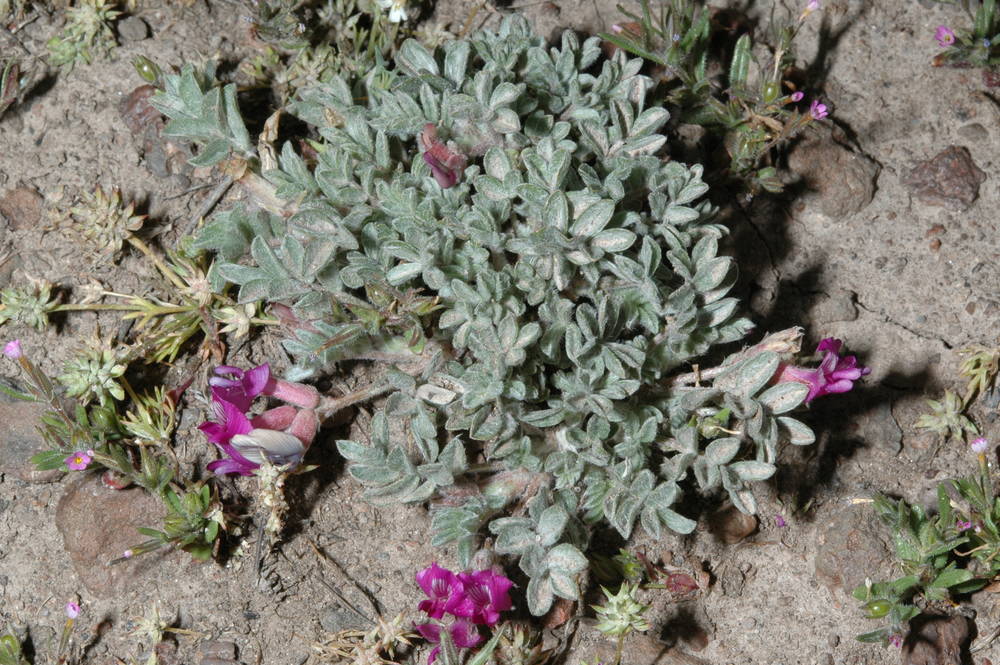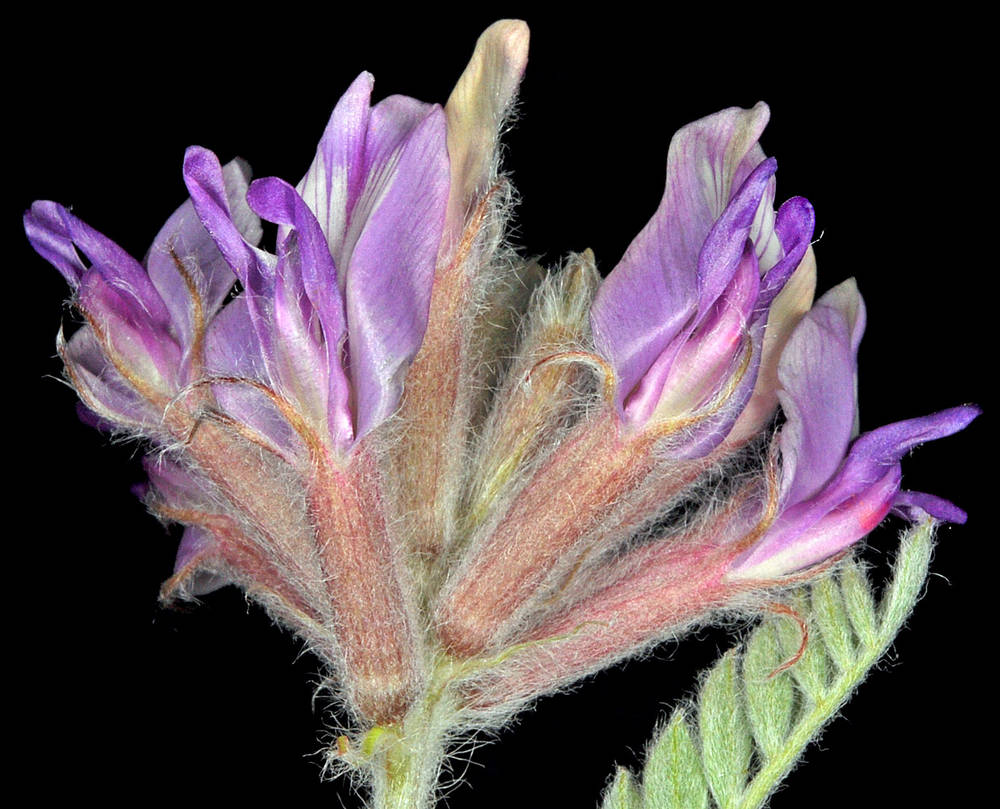Astragalus purshii
Astragalus inflexus
Pursh's milkvetch, woollypod milkvetch
bent milkvetch
prostrate, loosely to densely tufted, 0–20 cm.
several, prostrate and radiating with incurved-ascending tips, 10–50 cm.
1–12(17) cm;
leaflets (3)5–17(21), elliptic to oblanceolate, 2–14(20) × 1–7 mm;
tips obtuse to acute;
surfaces densely villous;
stipules 2.5–15 mm; free.
(3)4–12(16) cm;
leaflets (9)17–23(27), obovate to broadly oblanceolate; (4)6–16(20) × 2–6 mm;
tips acute to shortly acuminate;
surfaces pubescent;
stipules 5–12(16); free.
racemes or subumbels, 1–12-flowered;
peduncles 1–14 cm;
bracts 4–9 mm;
pedicels 2–4.3 mm;
bracteoles 0–2.
racemes loosely (5)8–18-flowered;
peduncles (2)3–8 cm;
bracts 4.5–10 mm;
pedicels 1.3–3.3 mm;
bracteoles 0.
ascending at anthesis;
calyces 5.5–16(19) mm, often purple, villous-pilose with white or mixed white and black hairs;
tubes 8.5–12.5 mm;
teeth subulate, 2.2–6 mm;
corollas 19–27 mm; whitish to ochroleucous or pink-purple;
ovules 14–40(46).
ascending at anthesis;
calyces (9.4)11.3–16.4 mm, usually purplish, villous with white hairs or rarely some black hairs;
tubes (6.2)8.2–10.2 mm;
teeth linear-lanceolate, 3.1–7 mm;
corollas (16.5)19.5–23 mm, pink-purple;
ovules 22–28.
unilocular, ascending, obliquely ovoid, usually curved, obcompressed, scarcely to deeply sulcate; (7)13–27(30) × 3.5–11 mm, densely white to tawny tomentose or densely villous;
hairs nearly always concealing valve surfaces;
valves coriaceous, sessile or on gynophores 0–1.6 mm.
unilocular, ascending, obliquely ovoid; lance-ovoid or oblong-ellipsoid,
straight proximally, incurved distally, obcompressed and sulcate at least ventrally; (13)15–25(30) × (5)7–9.5 mm, densely villous-hirsute;
hairs rarely concealing valve surfaces;
valves coriaceous; gynophores 0.5–1.8 mm.
=22.
Astragalus purshii
Astragalus inflexus
Western North America. ~8 varieties; 4 varieties treated in Flora.
Throughout western North America, particularly in the Intermountain Region, this is a low, tufted milkvetch with white or gray villous hairs and pods resembling balls of cotton. Barneby (1964) stated, “Attempts to devise a practical key to the varieties of A. purshii are never wholly successful.” Variety ophiogenes, the Snake River milkvetch, a native of Idaho, has been reported from Malheur County, but this is apparently based on misidentifications of A. purshii var. lagopinus. Variety ophiogenes has 3–11-flowered racemes and 9–17 leaflets.
Rocky slopes, dry grassy hillsides, river terraces. Flowering May–Jul. 400–900 m. BW, Col. ID, WA; northeast to MT. Native.
Astragalus inflexus is generally found along the Snake River and its tributaries in Idaho and Washington. It can be found on the banks of the Columbia River near The Great Bend in Washington, where the Snake enters the Columbia. A specimen from Gilliam County is probably an immigrant by way of seeds brought down by flood waters.
Richard Halse
Richard Halse
- Local floras:
BC,
CA,
OR,
WA
- Local Web sites:
CalFlora,
CalPhotos,
Flora NW,
PNW Herbaria,
Turner Photog.
WildflowerSearch
iNaturalist (observations)
USDA Plants Database
- LBJ Wildflower Center
- SEINet
- Plants of the World Online
- Encyclopedia of Life
- Wikipedia
- Google Image Search





